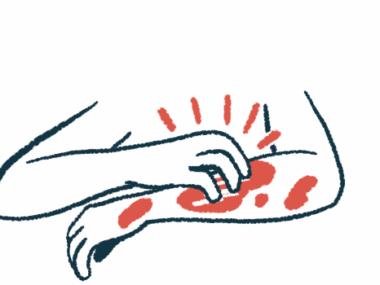Higher allergy prevalence found for adults with Sjögren’s in new analysis
More food and medicine allergies seen than in rheumatoid arthritis
Written by |

Adults with primary Sjögren’s syndrome (pSS) have a higher prevalence of common allergic disorders compared with those with rheumatoid arthritis (RA), another autoimmune condition, a medical records analysis has found.
Specifically, food and medicine allergies, nose inflammation known as allergic rhinitis, and eye inflammation called allergic conjunctivitis were found to be significantly more prevalent in those with Sjögren’s than in RA patients.
The data also showed that pSS patients were less likely to be given allergy medicines upon diagnosis than were individuals with rheumatoid arthritis.
“Unless they presented with complications, patients with pSS were not treated with medications, whereas patients with RA were usually started on drugs as soon as they were diagnosed,” the researchers wrote.
Findings from the analysis were detailed in the study, “Allergic disorders and their risk factors in primary Sjögren’s syndrome,” published in the World Allergy Organization Journal.
Investigating allergy prevalence in autoimmune diseases
Statistical analysis done by the researchers identified several correlations between different types of allergic reactions within the pSS population, which were not seen in the rheumatoid arthritis patients.
The team noted, however, that further studies are needed to investigate these associations.
Sjögren’s syndrome is an autoimmune disease that primarily affects the glands that produce saliva and tears, leading to symptoms of dry eyes and mouth. The condition is classified as primary or pSS when it is not associated with another disorder. It is called secondary Sjögren’s syndrome when it is linked to an underlying autoimmune disease, such as RA.
While studies suggest a higher overall prevalence of allergies in Sjögren’s patients, the risk factors for these symptoms in people with pSS remain unclear.
Now, researchers in Japan analyzed medical records to compare the prevalence of different types of allergies and associated risk factors in people with pSS compared with those with RA.
A total of 292 were diagnosed with pSS and 413 with RA. The median age of the Sjögren’s patients was 58, compared with 68 for those with rheumatoid arthritis. There were more female patients in the pSS group than in the RA group (94.2% vs. 78.2%).
At the time of diagnosis, none of the patients were taking immunomodulators or immunosuppressive therapies.
The team investigated five types of allergic reactions, including ones to foods and to medicines — both marked by post-exposure rash, swelling, or anaphylaxis, which is a severe allergic reaction. The other three were allergic rhinitis or conjunctivitis (eyes), asthma, and allergic contact dermatitis (ACD), caused by metals, synthetic fibers, rubber, or cosmetics.
Analyses revealed that 54.8% of pSS patients and 34.9% of RA patients showed at least one type of allergic disorder, a statistically significant difference.
Allergies that occurred significantly more often in pSS than in RA patients included food allergies (12.0% vs. 6.8%), medicinal allergies (26.4% vs. 16.2%), and allergic rhinitis/conjunctivitis (33.9% vs. 8.5%). A similar prevalence was found with asthma (9.9% vs. 6.1%) and ACD (3.4% vs. 4.6%).
In our study, patients with pSS presented a higher prevalence of food allergy, drug allergy, and [allergic rhinitis/conjunctivitis] than patients with RA.
The team noted that pSS patients were not immediately given medications, whereas those with RA usually started treatment at diagnosis.
As a result, RA patients — those taking more medicines for prolonged periods of time — would be expected to have more allergies. Still, in this study, the prevalence of medicine allergy was higher in pSS than in RA patients.
While medicinal allergies were not associated with age or sex, pSS patients with this type of allergy had significantly more food allergies (19.5%) and higher levels of eosinophils, a type of immune cell linked to allergic reactions, than those without a medicinal allergy (9.3%).
Antimicrobials were the most common medicine that triggered allergic reactions, while fruits, shellfish, and fish were the most common drivers of food allergies.
Statistical analysis showed that, after adjustments, risk factors for medicinal allergies included food allergies, high levels of eosinophils, and testing positive for anti-SSA antibodies associated with Sjögren’s.
Having an ACD allergy was associated with an almost fivefold higher risk of food allergy. Conversely, those with a food allergy had a 4.3 times higher risk of developing ACD. Asthma, ACD, and high eosinophil levels all were significantly linked to allergic rhinitis/conjunctivitis. Likewise, allergic rhinitis/conjunctivitis was associated with a 2.8 times greater risk of asthma.
The risk factors for all five types of allergies in pSS patients were not risk factors for those with RA, the researchers noted.
“In our study, patients with pSS presented a higher prevalence of food allergy, drug allergy, and [allergic rhinitis/conjunctivitis] than patients with RA,” the team wrote, adding, “Further studies to investigate these associations are needed.”





